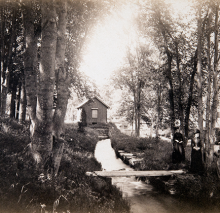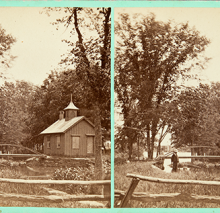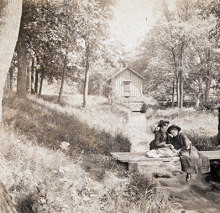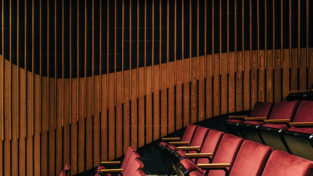Insider’s View: The Pump House
The Pump House, and what was referred to as the “kissing bridge,” were familiar sights to Mount Holyoke women of earlier generations. Although the original kissing bridge is gone, the Pump House remains, situated along the stream that runs between Upper Lake and Lower Lake, now surrounded by the Willits-Hallowell Center and Prospect. It is the oldest building on campus, having survived the numerous fires that destroyed so many of Mount Holyoke’s original structures.
- In 1852, the Trustees approved the construction of the building and the pump that it protected in order to supply the Mount Holyoke Female Seminary with running water. “That was an eventful day in the history of Holyoke,” an unknown student wrote in a letter home, “when water was first introduced to the Seminary building,” a huge structure that housed every aspect of students’ lives and was located along College Street. Instead of long pilgrimages to the basement with pail in hand to dip hot water from a great copper boiler (especially arduous for those living on the fourth floor), students now merely stepped outside of their rooms to draw water from a hall faucet.
- In 1879, a separate artesian well was dug that supplied drinking water to the campus, and the unfiltered brook water from the Pump House was used for washing. Later, when the College acquired a comprehensive water-purifying system around 1908, the building fell into disuse.
- Almost fifty years later the Mount Holyoke News published a humorous, albeit macabre, story entitled “Cats Prepare for Feline Farewell, Receive Royal Treatment in Shack.” By that time the Pump House had acquired the nickname the Cat House, due to its use as a holding cell for stray cats before they were euthanized and used as specimens by the zoological department. The “cat cells,” where felines were held, were actually partitioned cages. Most of the animals were only kept overnight, and the building was heated so that the cats were comfortable until their ultimate demise.
- In more recent years the Pump House was temporarily restored to its original purpose and for a while housed a monitoring system that helped control the flow of stream water for irrigation of the Orchards Golf Club. Now it is used as an ad hoc storage facility, holding pails, bug nets, and supplies for the nearby Talcott Greenhouse.
—By Taylor Scott
This article appeared in the winter 2015 issue of the Alumnae Quarterly.
January 18, 2015

















Leave a Reply